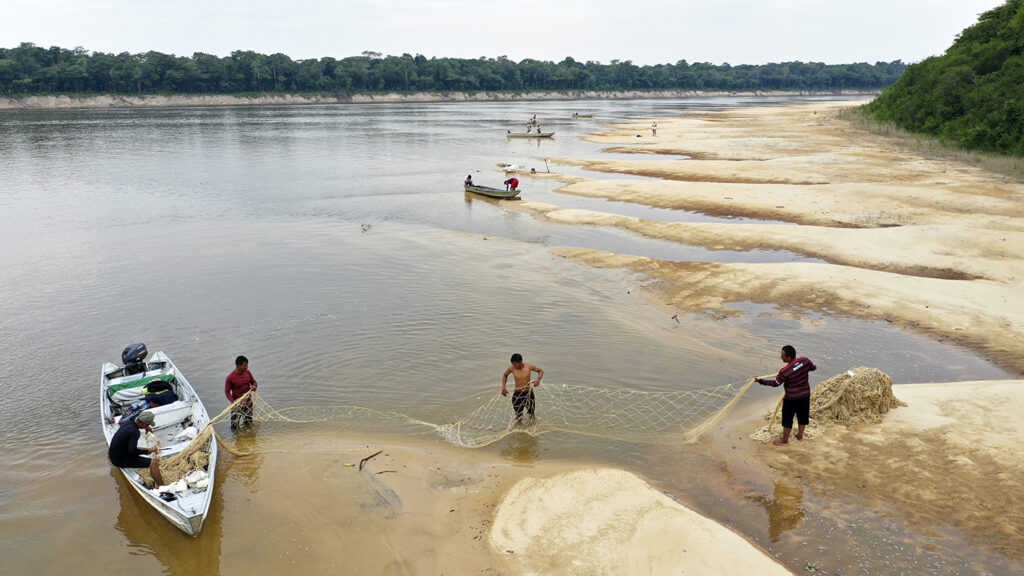The dried up rivers in the Amazon, the threat to the management of the pirarucu fish
In an open letter published on Tuesday (may 29), a Collective of organizations, calls for immediate actions to mitigate the damages caused, for the second time in the event of extreme weather
By Talita Oliveira | OPAN
The Amazon is facing a drought of unprecedented, for the second year in a row, with the main duct of the rivers, by logging levels to historic lows. The lower the volume of the water causes a ripple effect, affecting the transport and supply of the towns, agreeing to ecosystems, food security, and threatening activities, such as the sustainable management of the arapaima, which is essential to the local economy. In response to this, the Coletivo do Pirarucu has sent an open letter to federal agencies and their offices, regional, asking for urgent action to mitigate the damages caused by the strong in the dry season.
“This crisis is not only a challenge to the resilience of these communities, but it also highlights the urgent need for mitigation and adaptation strategies to climate change, to ensure the well-being and dignity of our current generations and the survival of the future generations to come,” says the passage of the charter.
Impacts on social, economic, and cultural aspects of the extreme drought
Of the 62 municipalities of the Amazon river have enacted an emergency situation due to the drought, which has a direct impact 186.921 thousand people, according to tracking by the Government of the State. Data from the Brazilian Institute of Environment and Renewable Natural Resources (Ibama) have shown that, during the severe drought of 2023, the managers left the fish for about 30% of the quota allowed by the court, resulting in a loss of revenue of approximately 10 million euros.

In a recent study published in the journal Nature, specialists in custom design for a drop of up to 19% of the global income by 2050 due to the effects of climate change. Indigenous peoples and traditional communities in the Amazon region, who depend on the rivers and in the forests in order to survive this situation highlights an urgent need that cannot be put off.
In addition to the economic impact of the charter highlights the loss of cultural drought cause of the indigenous people of the rivers, which have an intrinsic relationship with the rivers of the amazon. “All the rivers, they play a crucial role in the livelihoods of the indigenous people of the riverside in the Amazon region, and it is more than just sources of water, are the real actors in life and culture, as it helps to shape their own identity, traditions, and people’s livelihood,’ says the stretch of the document.
The main claims
In the letter, the representatives of the organizations manejadoras, institutions, technical assistance, and support in the different areas in which the management of the pirarucu fish, they ask that you:
- The period of fishing for arapaima, and the non-indian to be extended up to January 31, 2025, and there’s also an extension of the deadline for submission of the report of the annual income from the management, to the 1st of may, in the year 2025;
- The management of the pirarucu fish to be included in the program of insurance to the rural to the Plan for the Crop;
- Emergency aid to the fishermen affected, including the remarkable;
- An emergency action plan on climate is to be built in partnership with community leaders, organizations, manejadoras, and technical support, in order to mitigate the effects of extreme weather events in the region.
Submitted to the ministry of the Environment and Climate Change, Fisheries, and Aquaculture, and the Low, the book is called urgently to ensure the continued sustainable management of the pirarucu fish, and, at the same time, to protect the rights, traditional knowledge and bio-diversity of the Amazon.
Read the full letter here.
